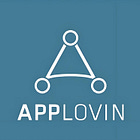Deep|APP: What is Fingerprinting and Its Impact
Fingerprinting may be one of the grayest topics in the advertising industry.
Disclaimer: The content provided in this newsletter is for informational purposes only and does not constitute investment advice. We are not registered investment advisors, and nothing in this newsletter should be construed as a recommendation to buy or sell any securities. Always do your own research and consult with a licensed financial professional before making any investment decisions.
We are about to implement our quarterly price hiking. The previous prices will still be available for the this week, after which the price will increase to $80/month. Existing subscribers don't need to worry about the price increase - your future renewal prices will remain the same as when you first subscribed. Subscribe now to lock in current pricing. This is mainly because our research costs are very expensive, including numerous expert interviews. In this week, we will publish several in-depth research reports, including U.S. advertising macro research and the revenue impact of AI on Chinese CSPs.
We've previously discussed allegations against Applovin including hijacking META attribution, requiring advertisers to send back META data, and direct downloads.
We've also discussed e-commerce advertisers' views on the Applovin short report.
Now a fifth short report has emerged, and we'll primarily discuss Fingerprinting.
For more content about Applovin, check out DaRazor's latest commentary and Applovin CEO's recent response.DaRazor has very unique insights on AdTech, and DaRazor's understanding of trading is also quite profound.
Razor's Edge: In Defense of Mclovin.....Again...
Performance Advertising: How we drive value and handle data
In this article, we'll analyze why fingerprinting came about, its impact on the industry, whether Applovin's fingerprinting practices are compliant, if Applovin ensures users are consent, and how to view the current valuation.
MW’s Short Report
Last Thursday, another Muddy Waters report shorting Applovin was released, making it the fifth Applovin short report in the past two months.
Here's a direct quote from TMTB describing the Muddy Waters short report:
"MW argues it's an overhyped AdTech company with unsustainable practices. They claim ~52% of APP's e-commerce sales come from retargeting, with only ~25-35% being incremental—far below the CEO's claim of nearly 100%. They also estimate a ~23% churn rate in Q1 2025, contradicting the CEO's 'no churn' assertion.
The report alleges APP systematically violates third-party platform Terms of Service (TOS) by creating Persistent Identity Graphs (PIGs)—synthetic user profiles built from misappropriated data (e.g., IDs from Meta, Google, Shopify). This 'fingerprinting' scheme, banned by Apple and restricted by others, risks deplatforming, a major threat to APP's business model. If not deplatformed, competitors could replicate these low-tech tactics, eroding APP's edge. APP's advantage in ad auctions stems from this 'black edge,' but Muddy Waters argues it's not innovative—just audacious—relying on old tools repurposed post-iOS 14.5 privacy changes."
Most of these allegations can be summarized into several points:
Applovin violates Apple's Fingerprinting policy
Applovin hijacks attribution from META and others
Applovin collects user ID information on third-party platforms through Pixels
Applovin's e-commerce customers have poor results, high churn, and their revenue isn't incremental
We've addressed most of these allegations in our responses to previous short reports, including attribution issues, new user issues, and Applovin's collaboration with advertisers to collect user data.
Following the short report, Applovin's CEO responded through a CEO Letter addressing the Pixel issue, specifically mentioning that GOOG and META have similar Pixel practices.
Applovin even hired Elon Musk's lawyer, Alex Spiro, to investigate the compliance of the short reports.
Muddy Waters' e-commerce sample is small, only 5 customers, and customer churn is actually normal for newly tested products.
The most worth discussing point in this report is Fingerprinting. Applovin's situation with Fingerprinting is indeed different from GOOG and META. With GOOG and META, since they use internal IDs, customers have definitely selected User Agreements ensuring consent in various scenarios, but with Applovin this is uncertain.
Background of Fingerprinting
After Apple banned IDFA, every company tried various methods to supplement IDFA data.
The first attempt was Apple's own SKAdnetwork (SKAN). Apple offered SKAN to advertisers for free, allowing them to provide attribution and monitoring services for iOS marketing campaigns without requiring user permission.
In practice, devices send SKAN attribution information to Apple, which then forwards it to advertising channels, developers, and MMPs.
However, compared to IDFA, SKAN still has many issues:
Reduced overall precision: Advertisers struggle to obtain user-level data through SKAN and cannot monitor ROI or LTV performance data.
Delayed feedback: SKAN actively delays data transmission, preventing marketers from responding quickly.
No longer supports interactive attribution.
Despite SKAN's continuous upgrades, advertisers remain unsatisfied.
Besides SKAN, Fingerprinting is another method helping advertisers supplement IDFA data. Fingerprinting was initially created to track mobile web clicks when device IDs weren't available, typically involving mobile ad platforms recording user metadata at click time, such as IP address, OS version, and device model. All this information is combined to create a unique device identifier.
Keep reading with a 7-day free trial
Subscribe to FundaAI to keep reading this post and get 7 days of free access to the full post archives.



